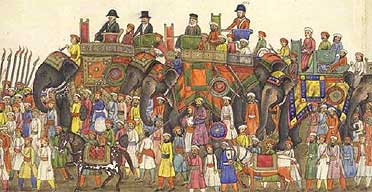The Last Mughal
There is an obvious point that can be made about contestations over the meaning of 1857′s Ghadr [Rebellion] in history and memory of South Asia by simply listing the various terms attached to that event: Sepoy’s Mutiny or Rebellion, First War for Independence, The War/Rebellion of India, Jihad for Freedom, and most recently, The Uprising. Such labels are reflected in the many personal narratives as well as the multitudes of histories that have proliferated since the 1880s in England or in India. Taken together, these primary and secondary narratives cover a broad spectrum of political belief and address diverse audiences and prejudices: colonial and native memoirs of participants and observers; letters and correspondences; professional histories and amateur histories; pulp fictions and dime novels; pamphlets and pleas; ghazals of the court and songs of the bazaar; historical and literary novels; and State publications, functions and commemorations. From 1857 to 2007, cultural memories and political histories have kept 1857 from receding into distant pasts and it remains a subject pliant to everything from the claims on colonial rulers by our postcolonial selves to the constructions of legendary figures and myths. Not to mention that it is used to explain the very nature of Colonialism in South Asia.







No comments:
Post a Comment